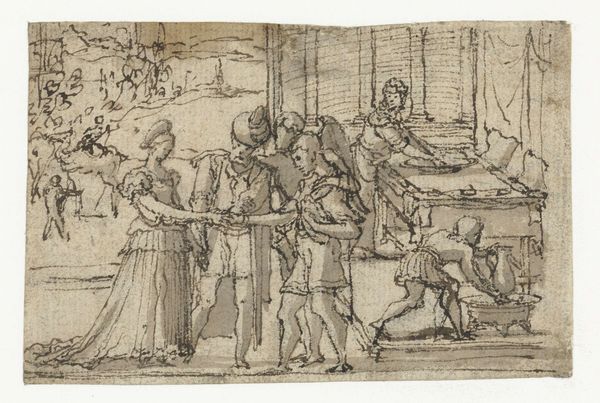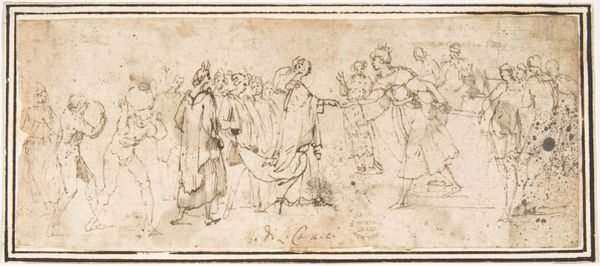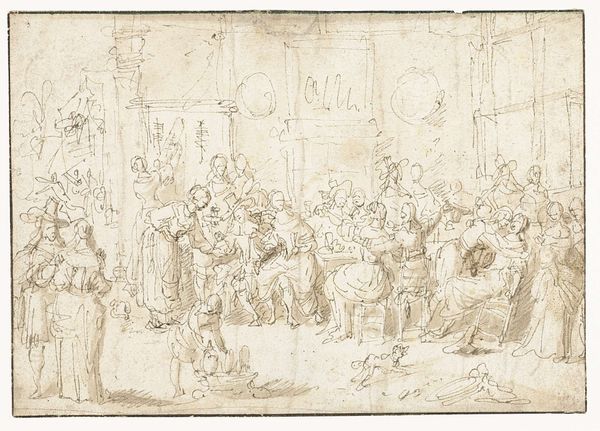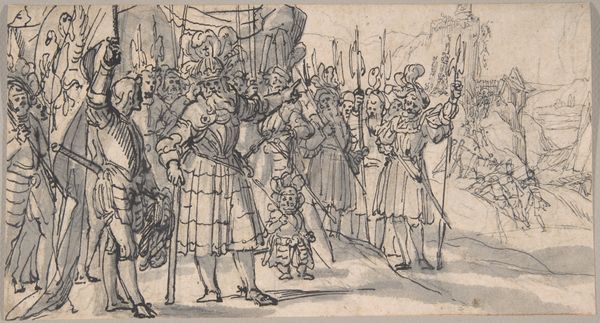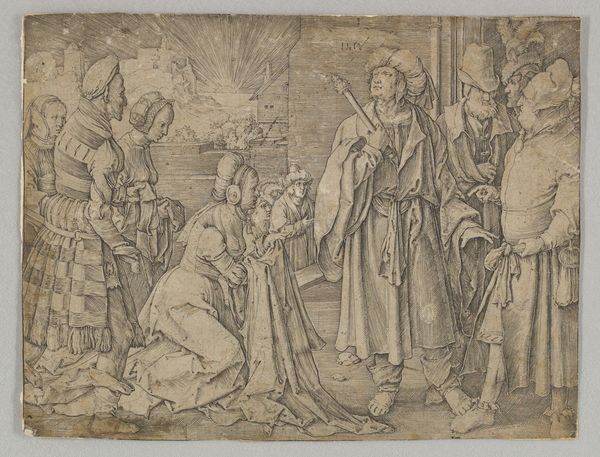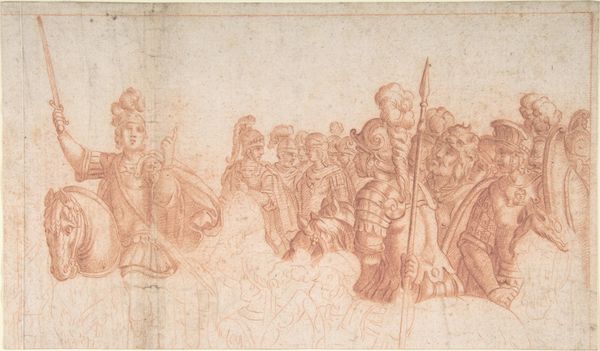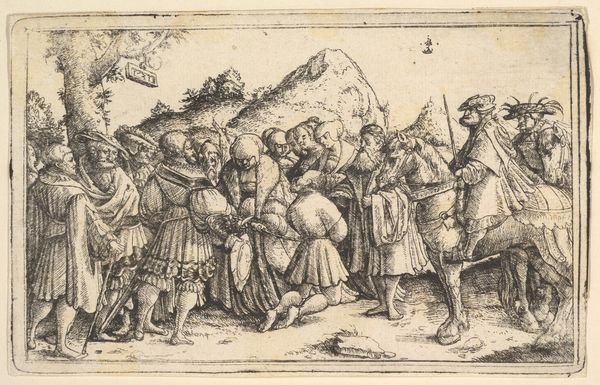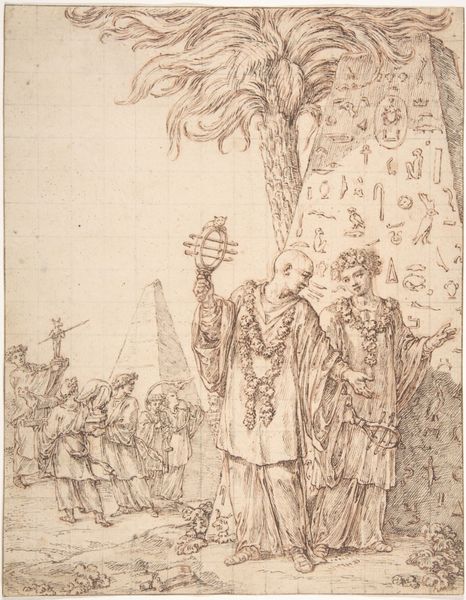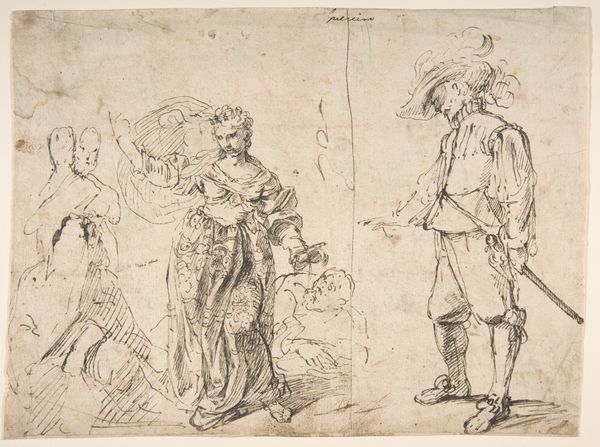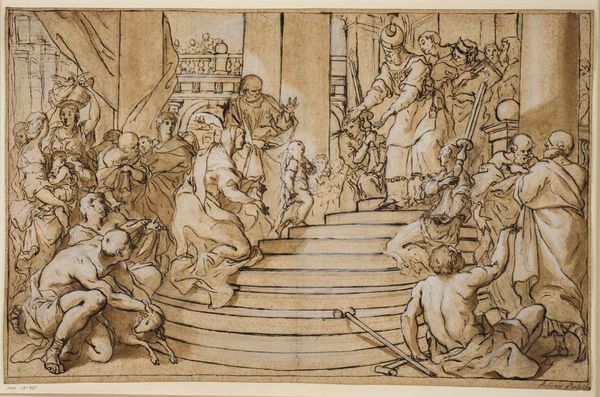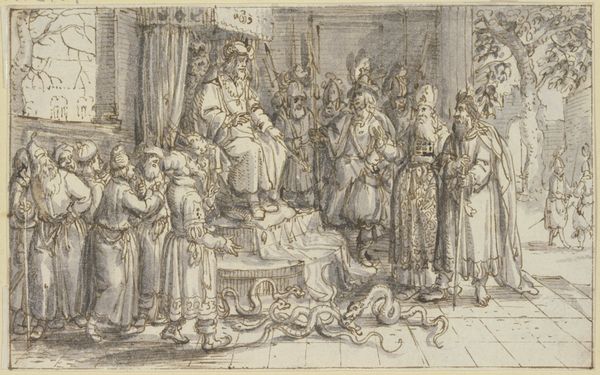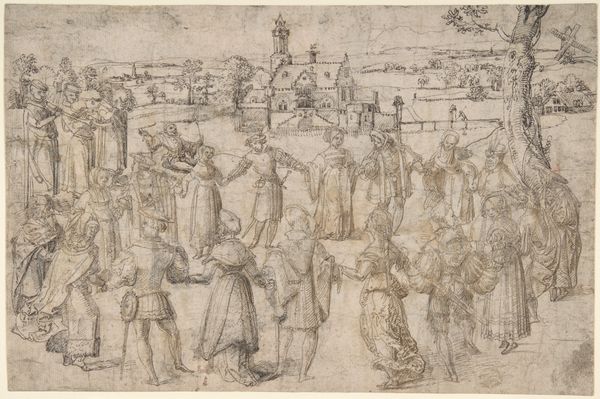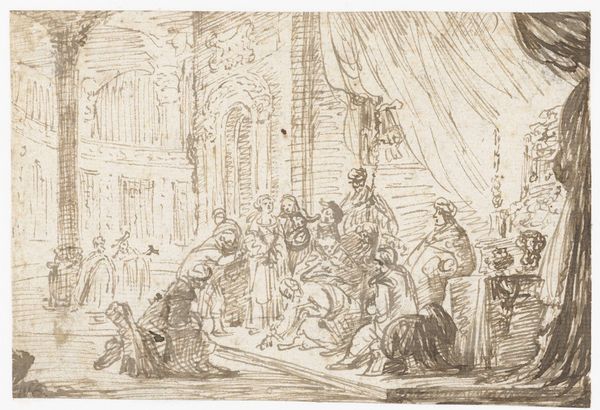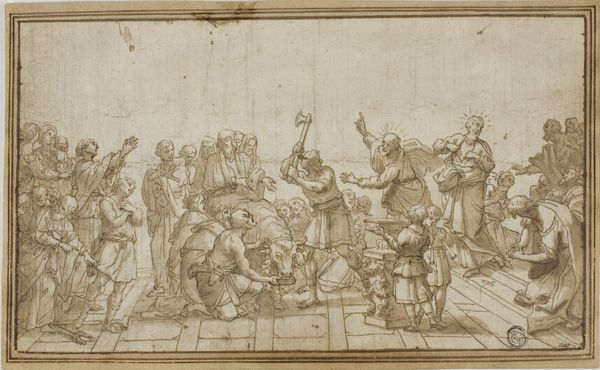
drawing, paper, ink
#
drawing
#
narrative-art
#
ink painting
#
figuration
#
paper
#
11_renaissance
#
ink
#
history-painting
Dimensions: 144 mm (height) x 231 mm (width) (bladmaal)
Curator: Today, we're looking at "Procession to the Mount of Olives," a drawing in ink on paper created between 1557 and 1629 by Bernardo Castello, and currently residing at the SMK, the National Gallery of Denmark. Editor: First impression? This piece gives off serious theater-staging vibes. It feels performative, all poised stances and deliberate gestures. Curator: The procession, a popular subject within the Renaissance, offered an opportunity to represent civic power, religious piety, and, significantly, social order. Castelo created this to represent a highly stratified and ritualized public drama. Editor: It feels static, though, doesn't it? Like a freeze-frame of a play mid-act. Is it intentional, that the emotion seems so… contained? Curator: I think you are absolutely correct. The containment highlights the intended sobriety of the theme. This image can be situated at a time of extreme political conflict when Catholic and Protestant factions engaged in bitter disputes. These displays of power served to affirm the status quo in periods of societal shift and perceived religious upheaval. Editor: So it’s less about spirituality, more about cultural positioning? Interesting. The building in the background and strange shadow puppetry figures further back make me question their piety. It does remind us how much of art production occurred through a lens of political leverage. Curator: Exactly. Consider also that Castello was working during a period when the Counter-Reformation was in full swing. Visual art played a crucial role in reasserting the doctrines and the power of the Catholic Church in response to the challenges posed by Protestantism. Editor: Makes the composition almost ironic now. Art becomes part of the political landscape, almost literally paving the way for certain doctrines to march forward, doesn't it? Curator: Precisely! And analyzing works like Castello’s drawing allows us to understand how art participated actively in these broader cultural narratives. It highlights the importance of unpacking the values they uphold. Editor: A powerful, albeit restrained, expression. You really made me see how context shapes perception, a valuable exercise, truly!
Comments
No comments
Be the first to comment and join the conversation on the ultimate creative platform.
